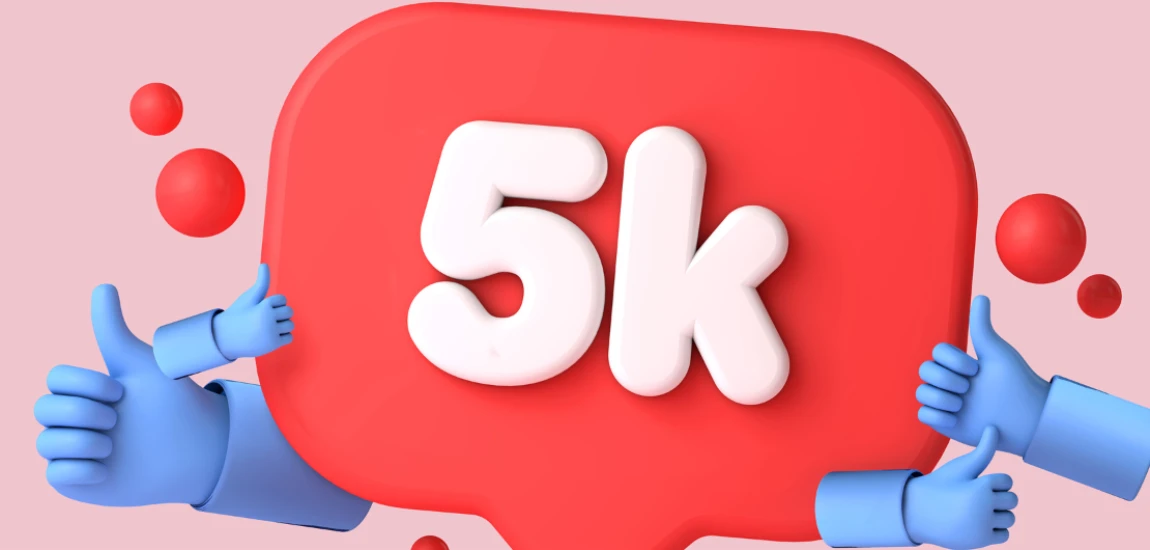The Micro-Influencer Economy: When 5K Followers Is Enough

For years, influencer marketing seemed like a game for the elite. Millions of followers, blue checkmarks, and lavish brand deals defined who got noticed. But the landscape has shifted. Today, micro-influencers—creators with anywhere from 1,000 to 50,000 followers—are at the center of the social media economy. Their secret? Authenticity, relatability, and niche influence that feels more trustworthy than polished celebrity endorsements.
This new economy challenges the idea that only massive numbers matter. In fact, 5,000 followers can be enough to land brand partnerships, build sustainable income streams, and cultivate loyal communities. In this post, we’ll explore why micro-influencers are thriving, what makes them valuable to brands, and how aspiring creators can succeed in this growing digital ecosystem.
Redefining Influence in the Social Media Age

The rise of micro-influencers signals a major shift in how influence is measured.
Beyond Vanity Metrics
In the early days of influencer culture, numbers were everything. A million followers equaled credibility, and brands often spent their budgets chasing high-profile names. But as social media matured, marketers realized that massive reach doesn’t always translate into engagement—or sales. A smaller, highly active audience can outperform a larger, disengaged one.
Relatability Over Celebrity
Micro-influencers thrive because they’re relatable. Their content feels less like an ad campaign and more like advice from a friend. Whether they’re testing skincare products, reviewing books, or sharing everyday outfits, micro-influencers connect with audiences on a personal level. That intimacy makes their recommendations more persuasive than celebrity endorsements.
Niche Communities, Big Impact
The internet thrives on niches, and micro-influencers often specialize in very specific areas: vegan cooking, sustainable fashion, local travel, indie video games. These communities may be small, but they’re passionate. For brands, tapping into these tight-knit groups often yields stronger results than trying to reach everyone at once.
Why Brands Love Micro-Influencers

Brands aren’t just tolerating the micro-influencer economy—they’re actively investing in it.
Cost-Effective Partnerships
Hiring a celebrity influencer can cost tens of thousands (if not millions) per campaign. Micro-influencers, on the other hand, often work with more modest budgets or product exchanges, making collaborations more accessible to smaller brands. This affordability allows companies to work with multiple micro-influencers at once, amplifying reach across diverse communities.
Higher Engagement Rates
Studies consistently show that micro-influencers generate higher engagement rates than their macro counterparts. While big influencers may get likes in the hundreds of thousands, their engagement often dips below 2%. Micro-influencers, with their smaller but more dedicated followings, can see engagement rates of 5–10% or higher. This means their audiences aren’t just watching—they’re interacting, commenting, and buying.
Building Authentic Brand Relationships
Brands know consumers crave authenticity. Micro-influencers typically collaborate with companies that align with their values and interests, making promotions feel genuine. Instead of a celebrity pushing a product they’ve likely never used, micro-influencers showcase items they’d actually buy themselves. This authenticity translates into trust, which is priceless in a competitive market.
The Power of 5,000 Followers

You don’t need a massive following to enter the micro-influencer economy. In fact, 5,000 followers can be enough to land brand deals and begin monetizing.
Quality Over Quantity
A follower count of 5,000 may seem small in comparison to big names, but if those followers are highly engaged, it’s a powerful platform. An audience that comments, shares, and trusts your opinion is more valuable than a disengaged crowd of 50,000.
Brands Value Local and Niche Reach
For businesses, especially small or local ones, micro-influencers with 5,000 followers in their area can have a stronger impact than a celebrity with millions worldwide. A local coffee shop or boutique may get better results working with a micro-influencer who lives nearby and shares genuine experiences than through a broad, global campaign.
Monetization Opportunities
At 5,000 followers, creators can start charging for sponsored posts, affiliate partnerships, and product collaborations. While it may not mean quitting your day job right away, it can provide supplemental income and open doors to larger opportunities. Platforms like Instagram, TikTok, and YouTube increasingly support small creators through creator funds, affiliate marketplaces, and branded content tools.
Building Trust and Authenticity as a Micro-Influencer

The key to thriving in the micro-influencer economy isn’t just numbers—it’s trust.
Transparency with Followers
Audiences are savvy. They can spot inauthentic promotions a mile away. Micro-influencers build credibility by being transparent about partnerships and only promoting products they genuinely like. This honesty strengthens trust and encourages long-term loyalty.
Storytelling Over Selling
Instead of hard-selling, micro-influencers succeed by weaving brand promotions into their stories. A fitness influencer might casually incorporate a protein shake into a “day in the life” video, while a beauty creator may show how a product fits into their morning routine. This style of content feels natural, not forced.
Consistency and Community Engagement
Responding to comments, sharing behind-the-scenes moments, and showing up consistently builds a sense of community. Micro-influencers who treat their followers as friends rather than numbers foster deeper connections, which translates into stronger influence when promoting products or causes.
Challenges and Realities of the Micro-Influencer Economy

Despite its promise, the micro-influencer economy isn’t without challenges.
Income Instability
While 5,000 followers can open doors, income can be inconsistent. Some months may bring multiple collaborations, while others may be quieter. Many micro-influencers juggle their online presence alongside other jobs to ensure financial stability.
Burnout and Pressure
Creating regular, engaging content is demanding. Balancing authenticity with brand expectations can be stressful, especially when algorithms constantly shift. The pressure to grow and maintain engagement can lead to burnout if not managed carefully.
Competition in a Crowded Space
The rise of micro-influencers means the field is increasingly crowded. Standing out requires strong branding, a unique niche, and consistent content. Creators need to find their voice and offer something distinct to keep both audiences and brands interested.
How to Thrive as a Micro-Influencer

For those aspiring to join the micro-influencer economy, strategy and authenticity are key.
Choose Your Niche Wisely
Pick a niche you’re genuinely passionate about. Whether it’s thrifting, cooking, gaming, or wellness, focusing on a specific area helps attract a loyal audience and makes you more appealing to brands targeting that demographic.
Prioritize Engagement Over Growth
Don’t obsess over numbers. Instead, prioritize building strong relationships with your current followers. Reply to comments, ask questions, and create content that sparks conversations. Engagement is what brands value most.
Build a Professional Presence
Treat your platform like a business. Create a media kit highlighting your audience demographics, engagement rates, and past collaborations. Approach brands proactively instead of waiting for them to find you. A polished, professional presence signals that you take your role seriously.




